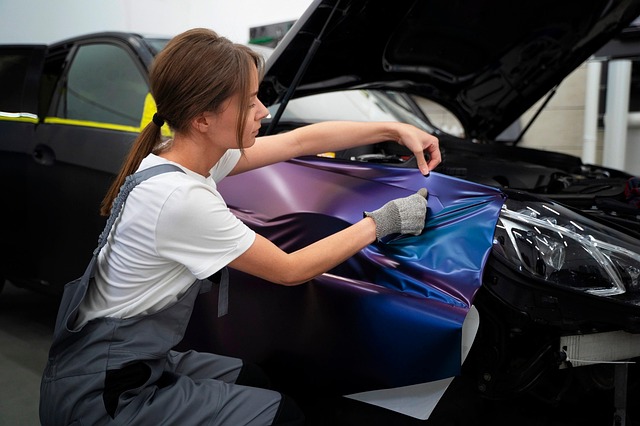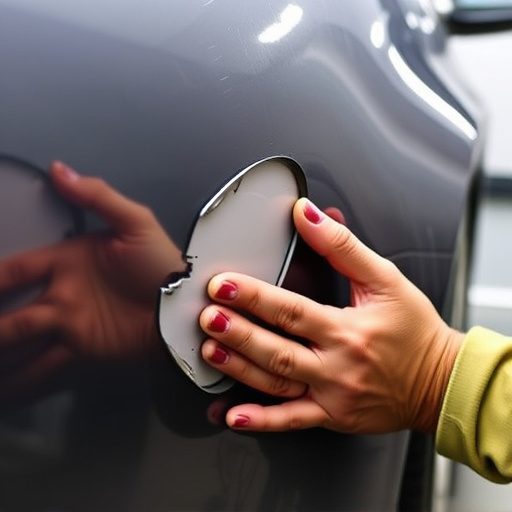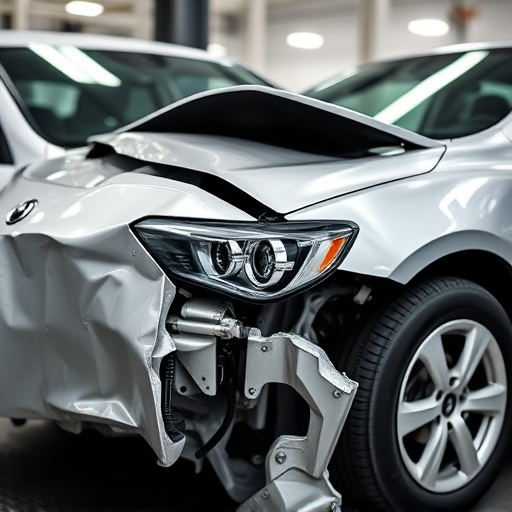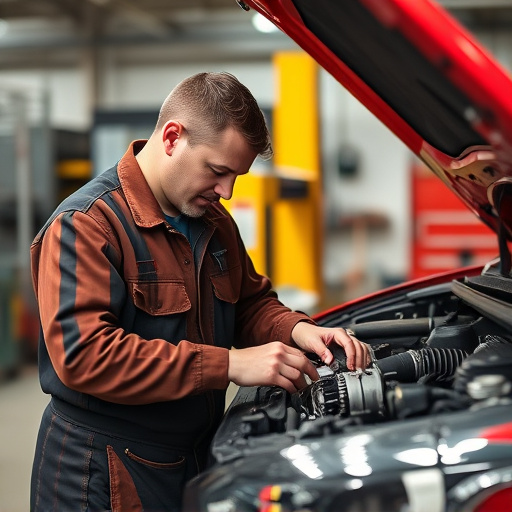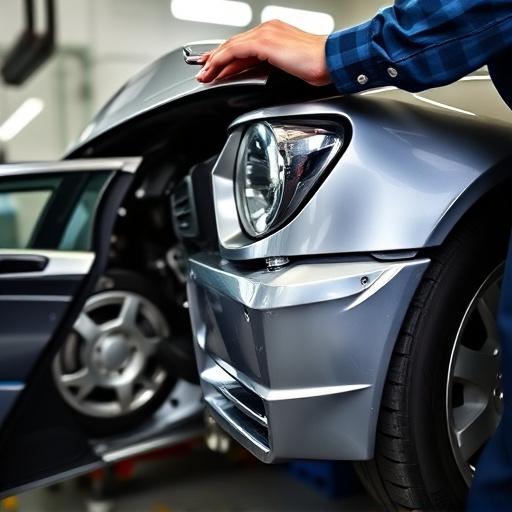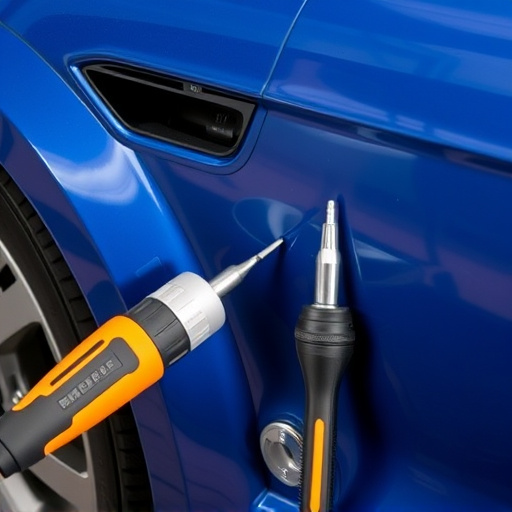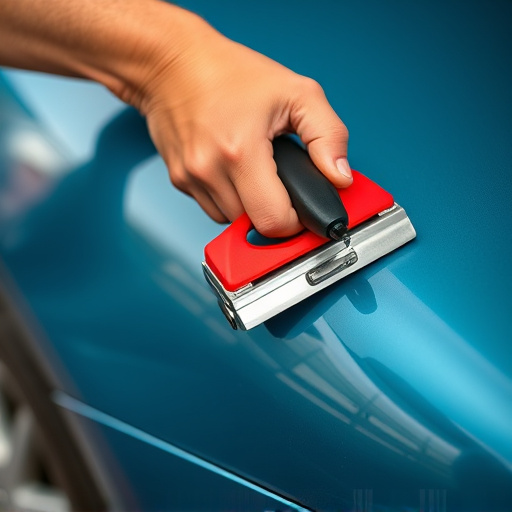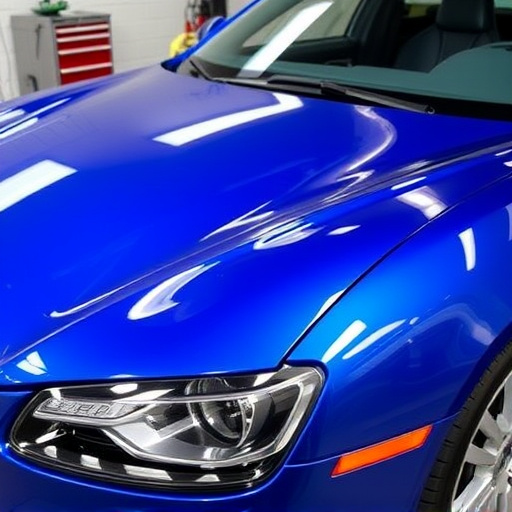Repairs to Tesla Model S front end, especially headlights and sensor housings, require specialized auto body shops familiar with electric vehicle technology. Inspect for damage, ensure proper alignment, and check electrical connections. For complex issues, consult a center with experienced technicians for ADAS components. Follow structured approach: assess damage, source quality parts, disassemble, clean, install new components, test and calibrate systems.
“Looking to restore your Tesla Model S’ front end? This comprehensive guide delves into the intricate components of your vehicle’s frontal system, offering a detailed understanding of headlights and sensor housing. We’ll help you diagnose common issues affecting these vital parts and provide a step-by-step repair process for an efficient, effective solution. Discover how to maintain and repair your Tesla Model S front end like a pro.”
- Understanding Tesla Model S Front End Components
- Diagnosing Headlight and Sensor Housing Issues
- Step-by-Step Guide to Effective Repair and Maintenance
Understanding Tesla Model S Front End Components
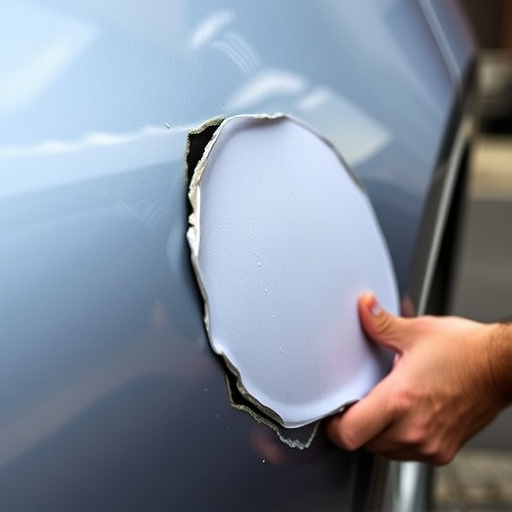
The Tesla Model S is an electric vehicle renowned for its sleek and futuristic design. When it comes to front-end repairs, particularly for headlights and sensor housings, understanding the intricate components is key. The front end of this car features a sophisticated assembly of parts that work in harmony to ensure safety, visibility, and advanced driver assistance systems (ADAS). These include robust headlamps, sensors, and housing structures designed to withstand impact while maintaining optimal performance.
A Tesla Model S front end repair involves addressing critical components like the headlights and sensors, which are integral to the vehicle’s overall functionality and driving experience. An auto body shop or auto repair shop specializing in electric vehicles is best equipped to handle these repairs, ensuring precision and compatibility with the car’s advanced technology. Auto body repair for the Model S requires a deep understanding of its unique design and materials, often involving replacement parts that meet Tesla’s stringent standards.
Diagnosing Headlight and Sensor Housing Issues

Diagnosing issues with your Tesla Model S’s headlights and sensor housing is a crucial step in any front end repair. Begin by examining the lights for any signs of damage, such as cracks or chips in the lens. Check for proper alignment, ensuring they are parallel to the road and not tilted. If one headlight is dimmer than the other, it could indicate a problem with the electrical connections or bulbs themselves.
Next, focus on the sensor housing. These components play a vital role in enabling advanced driver-assistance systems (ADAS). Inspect for any debris buildup that might be obstructing sensors, and verify that all covers are secure and undamaged. If you suspect an auto collision has affected these areas, it’s best to visit a reputable auto body repairs or tire services center that specializes in Tesla Model S front end repair. An auto collision center with experienced technicians will have the tools and expertise needed to diagnose and rectify complex issues involving headlights and sensor housing.
Step-by-Step Guide to Effective Repair and Maintenance
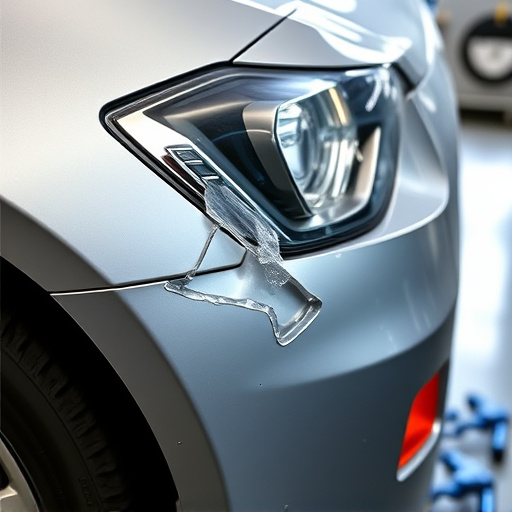
When it comes to repairing your Tesla Model S’s front end, especially around the headlights and sensor housing, a structured approach is key. Here’s a step-by-step guide to ensure effective repair and maintenance:
1. Assess the Damage: Begin by thoroughly inspecting the front end for any signs of damage, including cracked or broken headlight components and sensor housing. Look for dents, scratches, or evidence of hail damage that might require professional tire services.
2. Gather Replacement Parts: Obtain high-quality replacement headlights and sensor housings that are specifically designed for your Tesla Model S. Ensure compatibility to avoid any issues during installation. Many collision repair shops carry these parts or can source them quickly to minimize disruption.
3. Remove and Disassemble: Carefully remove the damaged headlight assemblies and sensors, taking note of their positioning and connections. This step requires precision to ensure a seamless reinstallation later.
4. Clean and Prepare: Before installing new parts, clean the front end thoroughly. Remove any dirt or debris that might have accumulated around the housing. Ensure the surface is free from contaminants to guarantee optimal performance of the sensors.
5. Install New Components: Fit the new headlights and sensor housings, following the original installation guidelines. Double-check all connections and make sure everything is securely fastened.
6. Test and Calibrate: After reassembling, conduct a test drive to verify the functionality of the headlights and sensors. Modern cars have sophisticated systems that require calibration after any repair, ensuring optimal performance.
Repairing your Tesla Model S’s headlights and sensor housing is an essential task for maintaining optimal visibility and safety on the road. By understanding the components and following a systematic approach, as outlined in this guide, you can effectively address common issues. Regular maintenance ensures not only the longevity of these crucial front-end parts but also enhances your overall driving experience. Remember, a well-maintained Tesla Model S is a testament to your commitment to both style and functionality.


